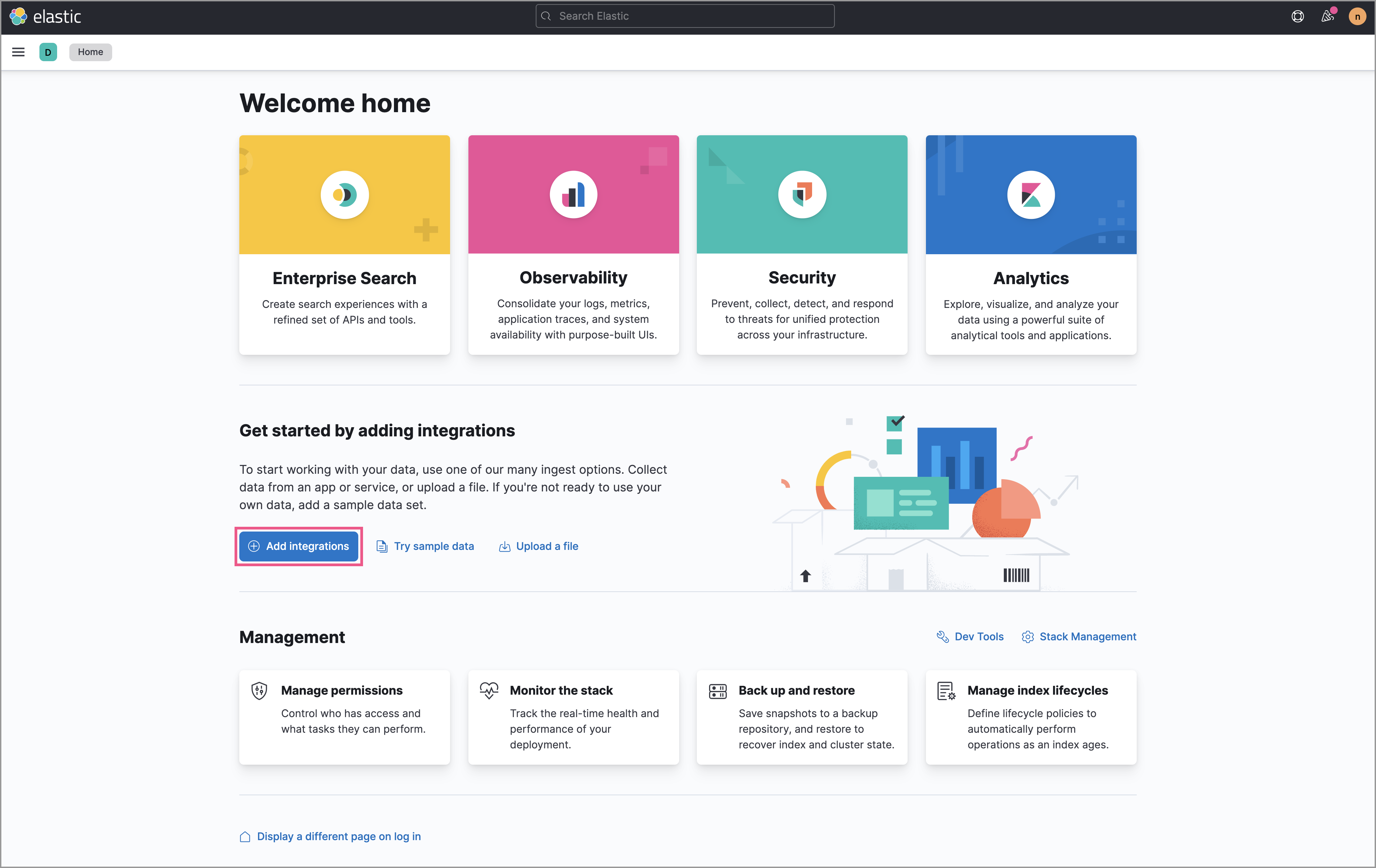Ingest data to Elastic Security
To ingest data, you can use:
- The Elastic Agent with the Elastic Defend integration, which protects your hosts and sends logs, metrics, and endpoint security data to Elastic Security. See Install Elastic Defend.
- The Elastic Agent with integrations, which are available in the Elastic Package Registry (EPR). To install an integration that works with Elastic Security, go to the Kibana Home page or navigation menu and click Add integrations. On the Integrations page, click the Security category filter, then select an integration to view the installation instructions. For more information on integrations, refer to Integrations.
- Beats shippers installed for each system you want to monitor.
- Logstash, which dynamically ingests, transforms, and ships your data regardless of format.
- Third-party collectors configured to ship ECS-compliant data. Elastic Security ECS field reference provides a list of ECS fields used in Elastic Security.
If you use a third-party collector—or some Logstash plugins without Elastic Agent or Beats—to ship data to Elastic Security, you must map its fields to the Elastic Common Schema (ECS). Additionally, you must add its index to the Elastic Security indices (update the securitySolution:defaultIndex advanced setting).
Elastic Security uses the host.name ECS field as the primary key for identifying hosts.
The Elastic Agent with the Elastic Defend integration ships these data sources:
- Process - Linux, macOS, Windows
- Network - Linux, macOS, Windows
- File - Linux, macOS, Windows
- DNS - Windows
- Registry - Windows
- DLL and Driver Load - Windows
- Security - Windows
To add hosts and populate Elastic Security with network security events, you need to install and configure Beats on the hosts from which you want to ingest security events:
- Filebeat for forwarding and centralizing logs and files
- Auditbeat for collecting security events
- Winlogbeat for centralizing Windows event logs
- Packetbeat for analyzing network activity
You can install Beats using the UI guide or directly from the command line.
When you add integrations that use Beats, you’re guided through the Beats installation process. To begin, go to the Integrations page (select Add integrations in the toolbar on most pages), and then follow the links for the types of data you want to collect.
On the Integrations page, you can select the Beats only filter to only view integrations using Beats.

To install Beats, see these installation guides:
No matter how you installed Beats, you need to enable modules in Auditbeat and Filebeat to populate Elastic Security with data.
For a full list of security-related beat modules, click here.
To populate Hosts data, enable these modules:
Auditbeat system module - Linux, macOS, Windows:
- packages
- processes
- logins
- sockets
- users and groups
To populate Network data, enable Packetbeat protocols and Filebeat modules: